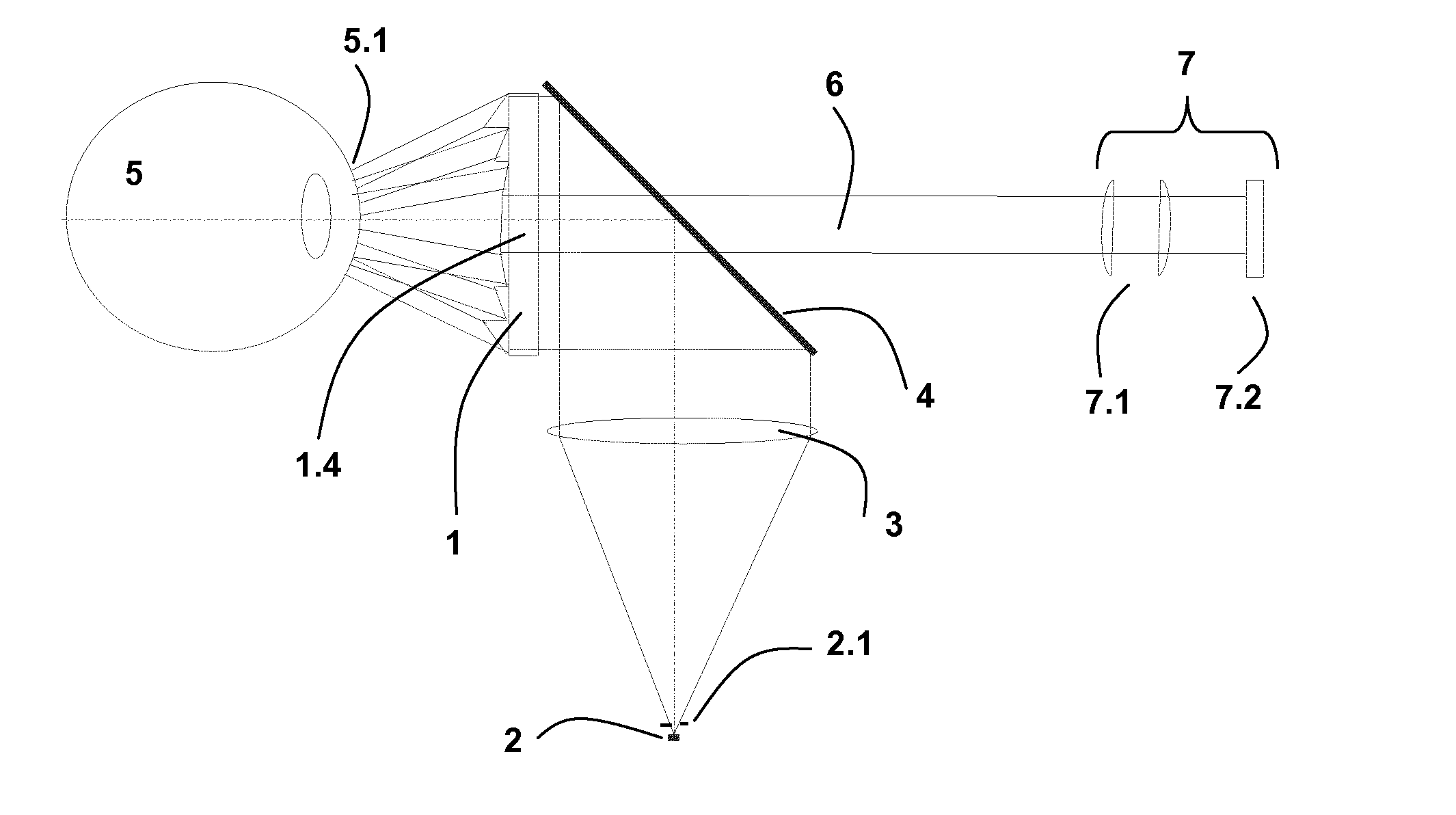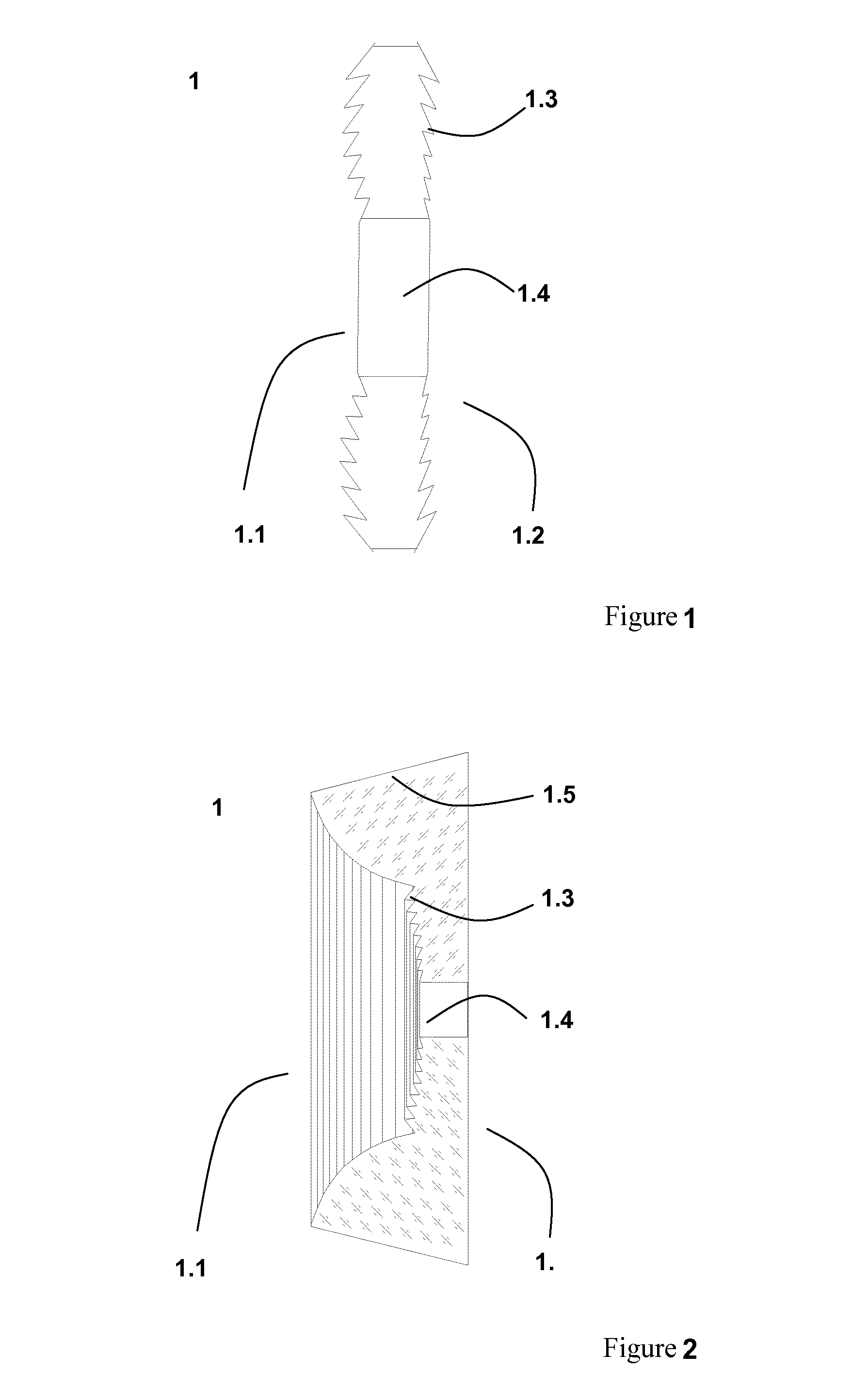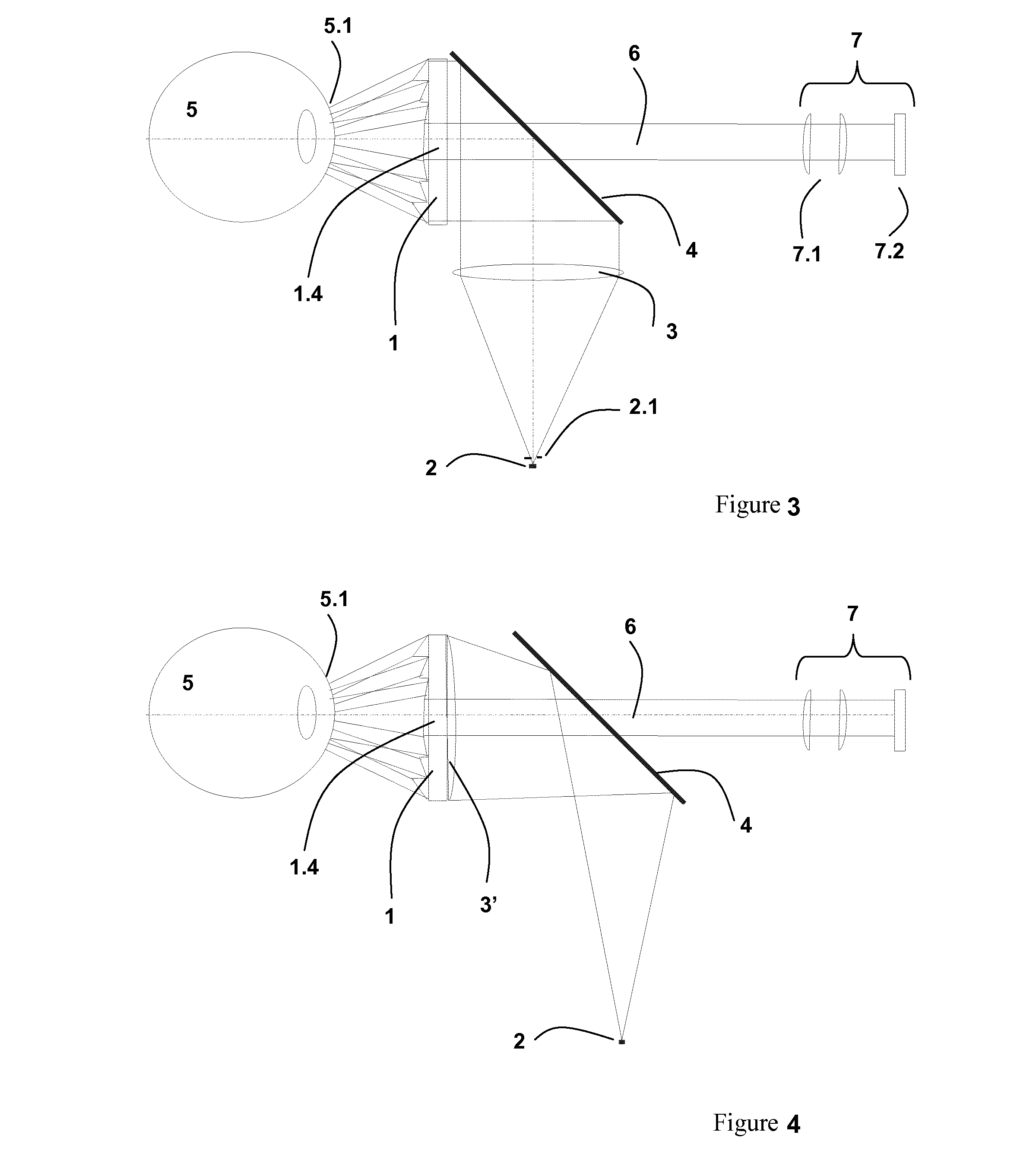System for determining the topography of the cornea of an eye
a topography and eye technology, applied in the field of eye topography determination system, can solve the problems of difficult illumination, interference with detection, and difficult to measure the surface of the cornea of the human eye, and achieve the effect of more cost-effective and high light efficiency
- Summary
- Abstract
- Description
- Claims
- Application Information
AI Technical Summary
Benefits of technology
Problems solved by technology
Method used
Image
Examples
second embodiment
[0074]In one example embodiment, the collimator lens normally used as the optical element for illuminating the entire surface of the fresneled axicon may be omitted if the back side of the fresneled axicon is embodied appropriately. In this regard, FIG. 4 is a schematic diagram of the inventive system having only one beam splitter.
[0075]In this case, the light emitted by an LED 2 is deflected towards the fresneled axicon 1 by a beam splitter in the form of a partially silvered plane-parallel plate 4. The back side 1.2 of the fresneled axicon 1 that is embodied as a collimator lens 3′ parallelizes the light for illuminating the entire surface so that there is no need for a separate optical element. The partial silvering of the plane-parallel plate 4 may then be embodied such that its center does not have any silvering so that illumination of the central zone 1.4 of the fresneled axicon 1 is avoided. The light of the LED 2 at different angles is reproduced on the cornea 5.1 of the eye...
first embodiment
[0106]In a first embodiment, one of the two optically active surfaces of the fresneled axicon also has a diffractive structure in the form of a diffraction grid, the grid lines of which run radially and the grid vectors of which run azimuthally on each location. In one further example embodiment, diffraction grids are used that have different local frequencies.
[0107]In a second example embodiment, one of the two optically active surfaces of the fresneled axicon also has a sinusoidal structure that runs radially. The modulation depth of the sinusoidal structure is between a few μm and a few 100 μm and its wavelength is between 0.1 mm and 20 mm. For example, the wavelength is approximately 2 mm.
[0108]The essential feature of this second example embodiment is that due to the azimuthal structures, in each section the partial waves remain completely collimated by the optical axis, while in the plane perpendicular thereto they are not focused in a sphere onto the optical axis. The wave ma...
PUM
 Login to View More
Login to View More Abstract
Description
Claims
Application Information
 Login to View More
Login to View More - R&D
- Intellectual Property
- Life Sciences
- Materials
- Tech Scout
- Unparalleled Data Quality
- Higher Quality Content
- 60% Fewer Hallucinations
Browse by: Latest US Patents, China's latest patents, Technical Efficacy Thesaurus, Application Domain, Technology Topic, Popular Technical Reports.
© 2025 PatSnap. All rights reserved.Legal|Privacy policy|Modern Slavery Act Transparency Statement|Sitemap|About US| Contact US: help@patsnap.com



